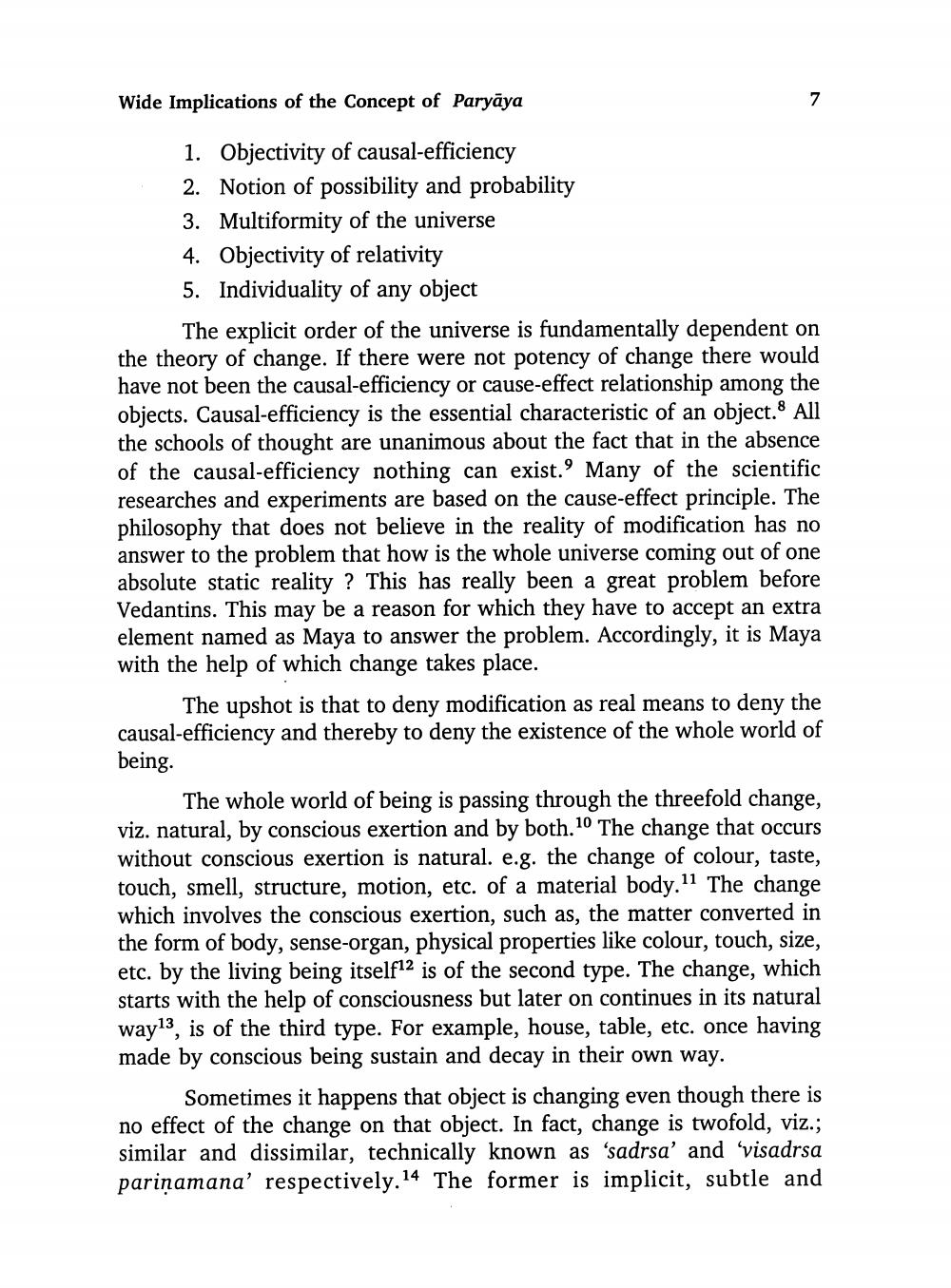________________ Wide Implications of the Concept of Paryaya 1. Objectivity of causal-efficiency 2. Notion of possibility and probability 3. Multiformity of the universe 4. Objectivity of relativity 5. Individuality of any object The explicit order of the universe is fundamentally dependent on the theory of change. If there were not potency of change there would have not been the causal-efficiency or cause-effect relationship among the objects. Causal-efficiency is the essential characteristic of an object. All the schools of thought are unanimous about the fact that in the absence of the causal-efficiency nothing can exist. Many of the scientific researches and experiments are based on the cause-effect principle. The philosophy that does not believe in the reality of modification has no answer to the problem that how is the whole universe coming out of one absolute static reality ? This has really been a great problem before Vedantins. This may be a reason for which they have to accept an extra element named as Maya to answer the problem. Accordingly, it is Maya with the help of which change takes place. The upshot is that to deny modification as real means to deny the causal-efficiency and thereby to deny the existence of the whole world of being. The whole world of being is passing through the threefold change, viz. natural, by conscious exertion and by both.10 The change that occurs without conscious exertion is natural. e.g. the change of colour, taste, touch, smell, structure, motion, etc. of a material body.11 The change which involves the conscious exertion, such as, the matter converted in the form of body, sense-organ, physical properties like colour, touch, size, etc. by the living being itself12 is of the second type. The change, which starts with the help of consciousness but later on continues in its natural way13, is of the third type. For example, house, table, etc. once having made by conscious being sustain and decay in their own way. Sometimes it happens that object is changing even though there is no effect of the change on that object. In fact, change is twofold, viz.; similar and dissimilar, technically known as 'sadrsa' and 'visadrsa parinamana' respectively.14 The former is implicit, subtle and




